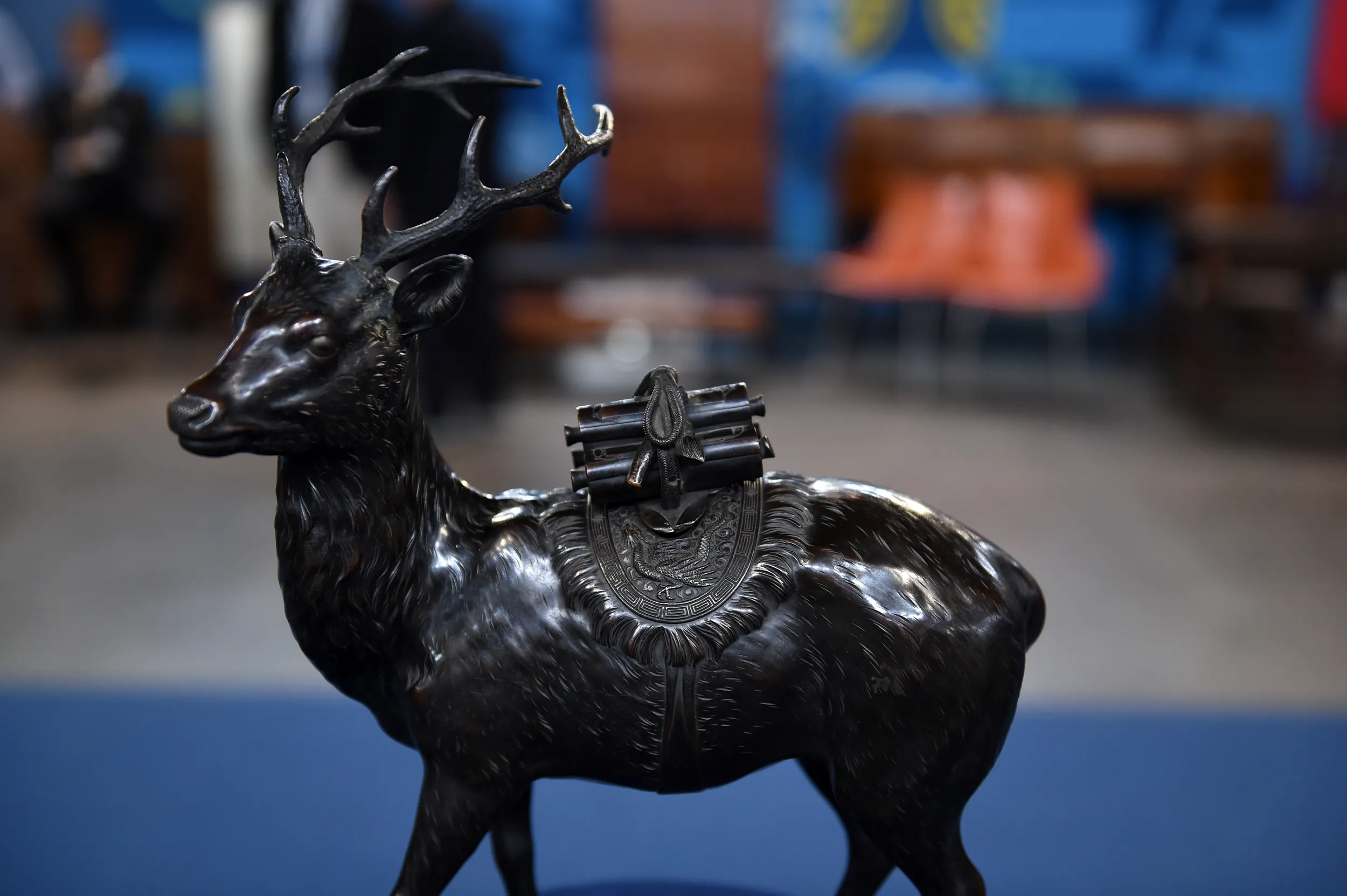GUEST: Several years ago, I went to an auction just out of the blue. It was in my town, and it was at a little church. So for the day, I played hooky and went to the auction. So I saw this piece, and I said, "Well, I'll bid on it." And I said, "I'll only go so far." And I got it. I won this bid on this deer.
APPRAISER: Not having gone too far, what did you pay for this at auction?
(laughs)
GUEST: $250.
APPRAISER: $250, and you brought it back with you.
GUEST: Yes.
APPRAISER: To give a little back story of where the Japanese market is, it's common knowledge that the market's a little soft these days, especially compared to other Asian art categories: Korean art, Chinese art. But there are exceptions. And the exceptions are made for extraordinary works of art, especially those attributable to extraordinary artists and those that exemplify a very high point artistically, and in terms of craftsmanship and skill. The object itself is a censer. The function of a censer is to make aromatic scented smoke for ritual purpose. And that is accomplished by removing this bundle of scrolls on the back of the deer and burning the incense inside this receptacle. There's a perforated bottom here through which the smoke will rise. The holes are obscured by the scrolls, but you can imagine the dramatic effect as the smoke would kind of rise up from this bundle of knowledge that the always lucky deer is carrying on its back. Instead of being filled with incense, there are a few items that you discovered upon buying this censer.
GUEST: Right.
APPRAISER: Including a slip of paper calling this a Japanese bronze deer Koro. It is attributable to a name, Kuniharu. Kuniharu is the master of the form. During the Meiji period, during the 1870s, 1880s, through to the 1890s, Kuniharu was perhaps the top bronzesmith of what was called the Tokyo School. The piece is marked on the underside. It's the nature of Japanese marks that they can say a number of things, but I think we'll substantiate easily enough that this is associated with Kuniharu's studio. When an object can be associated so closely with the name of a master, even in a down market, there can be tremendous interest and potentially tremendous prices here, too. Now, one of the slips that we found made reference to this piece being returned from the Boston Art Museum back in the early part of the 20th century, presumably. That can be substantiated. I can't do it with the resources I have available here, but that would contribute to the value, certainly, if we can substantiate this was on loan at a certain time, at a certain place. I think an appropriate auction value in 2016 would be $10,000 to $15,000.
GUEST: Okay.
APPRAISER: So you did tremendously well at auction.
GUEST: Wow, never, ever expected.
APPRAISER: Whatever it was that drew you to this piece, your instincts were absolutely correct. It's a masterpiece of its type.
GUEST: Wow, thank you.









